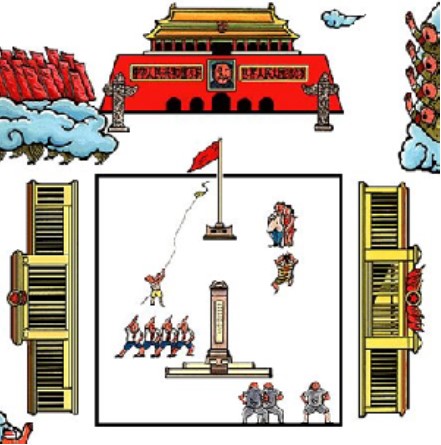The Gate of Heavenly Peace
This China in Red website.
The “Additional Readings and Links” section is divided into three subsections. The first, and most valuable, makes available in their entirety a host of relevant documents, including contemporary newspaper accounts, first-hand narratives of participants, analysis by foreign observers in both the capital and the provinces, and the official government account of “the turmoil.” A fruitful exercise might be to assign students a particular position from among this wide spectrum of viewpoints to research, debate, and defend. The second subsection provides links to related websites on topics such as China Studies, Human Rights, Film and History, and Film Studies. The third consists of two useful bibliographies of further readings on China in general and Beijing Spring 1989 in particular. These bibliographies, however, have not been updated since 1994.
Both the film, “The Gate of Heavenly Peace,” and its accompanying website fit well into a world history curriculum. It would probably be most helpful to situate the popular protests that broke out in major cities across the PRC in spring 1989 within a broader historical context of the post-socialist market reforms implemented since the late 1970s, not only in the PRC, but also in the former Soviet Union and the Eastern Bloc. In this sense, the decade of the 1980s can be seen as a watershed in world history—at once representing the denouement of the Cold War and the beginnings of “globalization” or “economic liberalization.” The PRC may be taken as an important case study of this historical trend. Indeed, underlying the tumultuous events of Beijing Spring 1989 are the still pressing issues regarding the social costs of market reforms and the various effects of economic restructuring upon the lives and futures of ordinary people. Useful comparisons might be made between post-Soviet Russia and a re-unified Germany.
